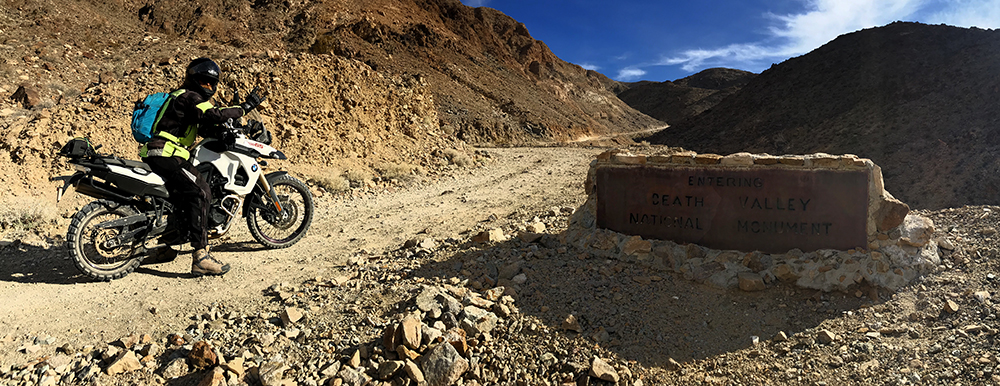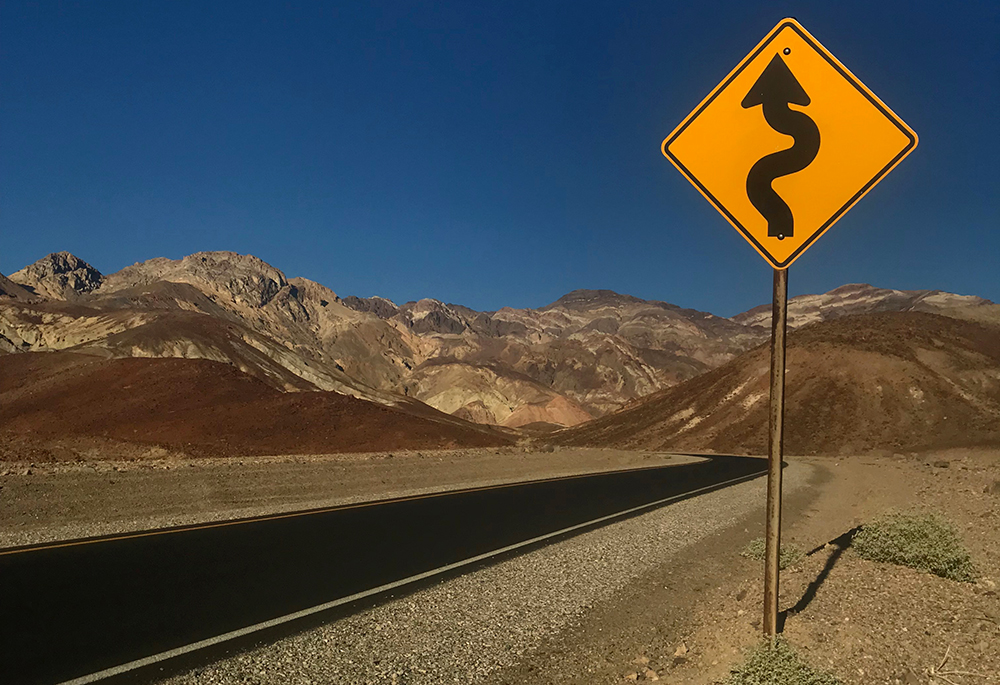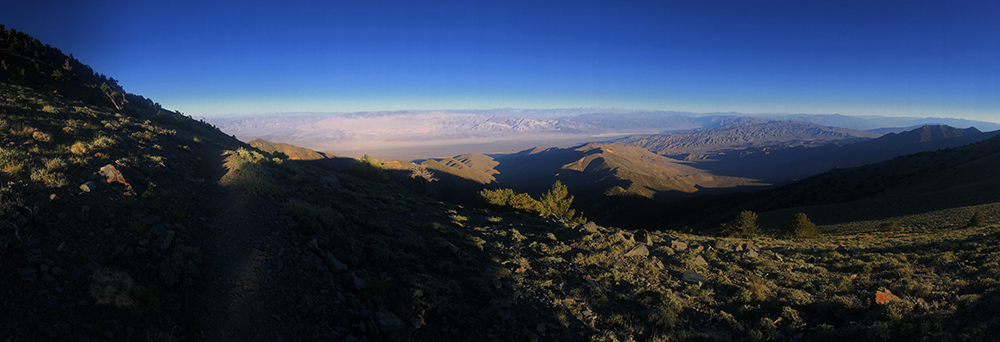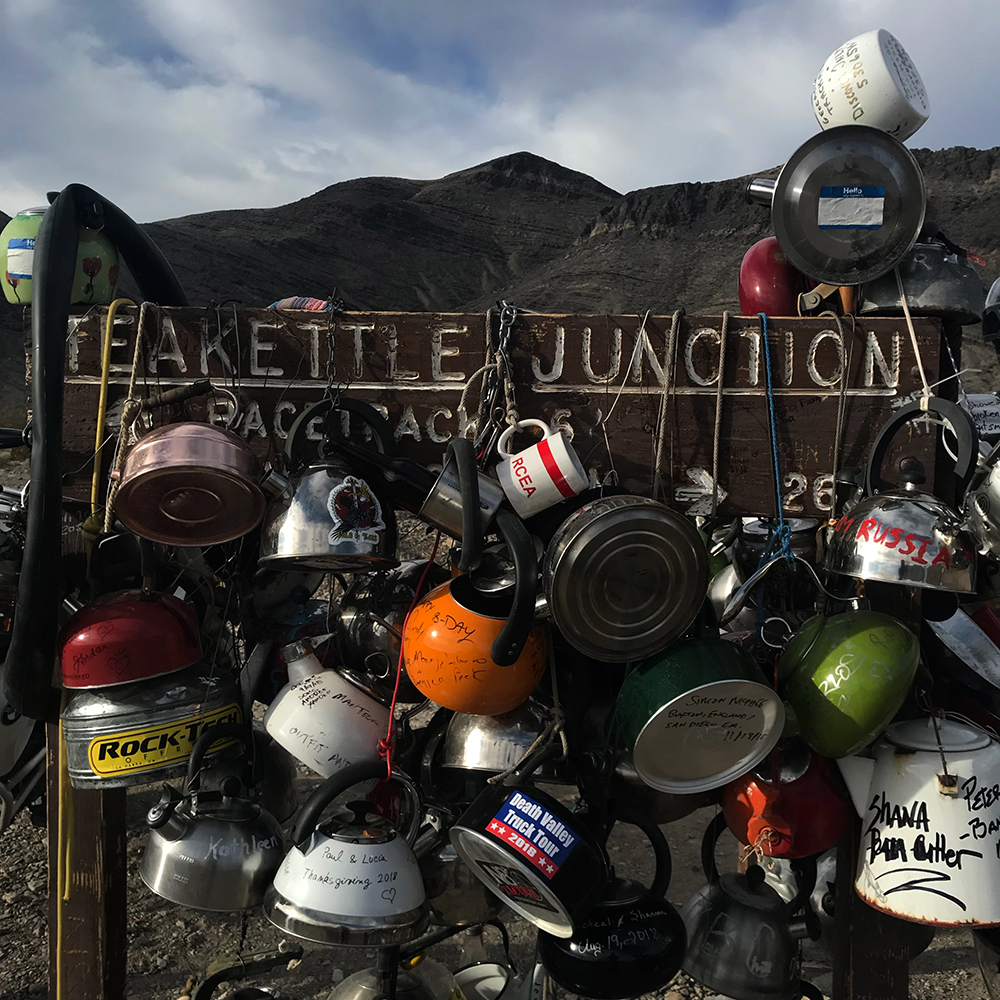Heralded as the hottest, driest and lowest of our NPS system, Death Valley National Park, in California’s largely forgotten Basin and Range region of the northern Mohave Desert, stands alone among our parks in many regards.

Guide to Death Valley
Death Valley National Park
Death Valley is the largest of the National Parks that lie in the Lower 48, with more than 3.5 million acres of rugged wilderness. Alaska’s great north has larger parks, but nothing even comes close in the south. Exploration here takes time and effort. It’s hot, and again: huge.
Now, let’s be straight up from the get, if you want to become intimate with Death Valley’s far-reaching corners, you better have some time on your hands and a dependable method of travel with good tires… This place is huge… And as rough as it gets…
Death Valley is the fifth largest in the national park system and is far and away the largest in the lower 48, encompassing more than 3.35 million acres of desert wilderness. That’s more than 1 million acres larger than second place Yellowstone. In many areas of this park, you can accurately describe your location as “the middle of nowhere”…
Nearly 1,000 miles of roadways criss-cross the park, with more than 300 miles of paved roads, and untold lengths of dirt and 4×4 trails, blazed long ago by miners who eked meager livings from the rugged and unforgiving mountains. Such roads today, though perhaps taxing on your vehicle, provide access to otherworldly scenes and long-forgotten mines, whose weathered structures still stand in remote sections of this massive park.

Death Valley lies in the rain-shadow of the Sierra Nevada Mountains, which rise just to the west, and thus the park receives less than 2 inches of annual rainfall. In the years of 1929 and 1953, not a single drop of rain was recorded here, and between the years of 1931 to 1934, a mere 0.64 inches of rain was recorded in the area.
Some years however, see substantial rainfall, and during such rare occasions, desert flowers whose seeds may have laid in wait for a decade, burst to life, blooming with surprising vivid color in an otherwise pastel network of painted desert.
Elevations here range from 282 feet below sea level in the searing-hot salt flats of Badwater Basin, to 11,049 feet, a mere 15 miles away at the oft-chilly and snow covered summit of Telescope Peak. That’s a vertical relief of more than 2 miles in 15 miles…
“Would you enjoy a trip to hell?…. You might enjoy a trip to Death Valley, now! It has all the advantages of hell without the inconveniences.”
April Fools Day Death Valley advertisement in a local newspaper – 1907
Technically speaking, Death Valley is a graben, or a sunken section of the earth’s crust. This low-lying area was home to ancient lakebeds that formed and subsequently evaporated countless times over countless eons.
With each passing lake, salt and mineral deposits were left behind that would eventually form large, flat salt-pan basins. The intense ground temperatures, which have been recorded in excess of 200 degrees F (84C), caused the expansion of these salt-crystals, creating the white hexagonal saucers of salt found at Badwater Basin today.
The extreme topographical relief of this park results in a wide variety of temperatures and climatic conditions. On July 10, 1913, the highest air temperature ever recorded on earth was measured at Badwater Basin, a scorching 134 degrees F (54C), according to the American Meteorological Society. During this heat wave, the temperature here reached 129 degrees for five consecutive days. Ironically, that same year witnessed the coldest recorded temperature here, a stunning 15 degrees (-10C) on January 8th at Furnace Creek.
Not only are these temperatures the most intense on earth, the summers never seem to end. In 2001, there were 154 days during which the temperature reached 100 degrees F and the summer of 1996 saw 40 days with temps in excess of 120 degrees. This is nothing new really, 1917 saw 43 consecutive days with the mercury topping 120 degrees. Some days, the low temp is still above 100 degrees here…

While Death Valley may offer but a few miles of designated hiking trails, off trail, cross-country travel can reward adventurers with troves of delicate and historic treasures.
Explorers will find colorfully contoured canyons that glow golden and pink at sunrise and sunset, panoramic views of vast dune-filled valleys from forested mountainside vistas, abandoned mines whose aged ruins stand silent as a testimony of by-gone eras, or secret hot springs that lie hidden behind the rough broken-down exterior of forgotten camps.
More than 10,000 abandoned mines are estimated to lie within the boundaries of the park. Most are small, but some were once home to bustling enterprise and commerce, such as Leadfield, found along the Titus Canyon Drive. This ghost town camp, home to some 300 people at its peak in 1926, held a post office, a general store, a club and yes, a mine… although it collapsed, due to the fact that the mine’s actual production was fraudulently advertised to milk investment from unsuspecting easterners.

Such stories abound in Death Valley. Visitors can learn of numerous scams and dishonest business ventures that unfolded in these desolate hills, but none may be more entertaining than the story of Scotty’s Castle. This residence in the park’s eastern Grapevine Canyon, was indeed the epitome of opulence when its construction began in the early 1920s.
This remote mansion was the result of an unlikely friendship between Death Valley Scotty, a Kentucky con-man who had convinced Chicago millionaire Albert Johnson to invest in a non-existent gold mine. Johnson eventually found that Scotty was a fraud, but somehow the two men struck up a friendship and the wealthy Illinois business man grew to love the remote desert landscape, and eventually built his vacation home here, leaving Scotty to oversee the operations in his absence.
A visit to this park should be carefully contemplated considering the season of travel. Further, accommodations along with provisions should be arranged prior to arrival due to the remote location and inhospitable temperatures during the summer.

Camping is available, as well as lodging and a general store in the Furnace Creek area, the park’s headquarters. Be aware, you’ll pay a premium for food, fuel and booze, so it’s advisable to make sure you’ve got plenty of all before you get here…
So, if you think you’re ready for a trip to hell, just cruise on over to the visiting, activities and facts pages here at park junkie, then pack your bags and fill your water bottles, and head on out to Death Valley National Park. You won’t regret it…
See ya there…
Guide to Death Valley
Relevant Links
National Park Guides

All content found on Park Junkie is meant solely for entertainment purposes and is the copyrighted property of Park Junkie Productions. Unauthorized reproduction is prohibited without the express written consent of Park Junkie Productions.
YOU CAN DIE. Activities pursued within National Park boundaries hold inherent dangers. You are solely responsible for your safety in the outdoors. Park Junkie accepts no responsibility for actions that result in inconveniences, injury or death.
This site is not affiliated with the National Park Service, or any particular park.
